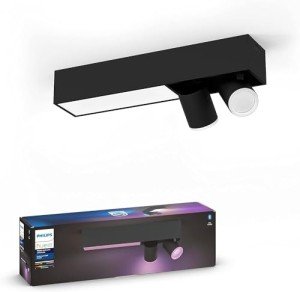How Contemporary Lighting UK Became The Hottest Trend Of 2024

Contemporary Lighting in the UK: Transforming Spaces with Illumination
Lighting plays an essential role in specifying the atmosphere and functionality of any area. In the UK, contemporary lighting has become a significant design element, providing innovative services that blend visual appeals with practicality. This post dives into the different designs, products, and technologies shaping contemporary lighting, together with pointers for choosing the most suitable fixtures for various settings.
The Evolution of Contemporary Lighting
Contemporary lighting in the UK shows the changing tastes and technological advancements in style. It encapsulates a large array of designs, including:
- Minimalist: Characterized by simplicity and tidy lines, minimalist lighting fixtures focus on type and function without unnecessary embellishments.
- Industrial: Inspired by urban settings, industrial lighting integrates basic materials like metals and woods with vibrant styles, creating edgy, practical pieces.
- Scandinavian: Known for its warmth and simplicity, Scandinavian lighting typically includes soft colors and natural products, focusing on developing a cozy environment.
- Smart Lighting: This modern pattern integrates technology with design, enabling users to manage their lighting with mobile apps, voice commands, or automation systems.
To highlight the development and range in the field of contemporary lighting, think about the table below, which highlights essential characteristics of different styles.
| Style | Key Characteristics | Popular Materials | Perfect Spaces |
|---|---|---|---|
| Minimalist | Easy, functional styles | Metal, glass, wood | Modern homes, offices |
| Industrial | Raw, unfinished look | Steel, concrete, wood | Lofts, galleries |
| Scandinavian | Comfortable, warm visual appeals | Natural fibers, light wood | Living spaces, coffee shops |
| Smart | Integrated technology, automation | Differs commonly | Homes, workplaces, retail spaces |
Selecting Contemporary Lighting Fixtures
Choosing the ideal lighting fixtures for a space requires cautious consideration of a number of elements. Here are crucial elements to keep in mind:
1. Purpose of the Space
Before choosing fixtures, think about the designated use of the location. Various functions require various kinds of lighting:
- Task Lighting: Focused illumination for activities such as reading, cooking, or studying. Examples consist of table lamps and under-cabinet lights.
- Ambient Lighting: General lighting that supplies total illumination. Ceiling lights and pendant fixtures fall under this classification.
- Accent Lighting: Designed to highlight particular functions or areas, such as artwork or architectural information. Wall sconces and track lighting prevail options.
2. Style and Theme
The lighting ought to complement the existing design. Choose for fixtures that match or boost the general theme of the area, whether it's contemporary, rustic, or diverse.
3. Size and Scale
Think about the proportion of the lighting fixtures relative to the space. A large chandelier might look spectacular above a spacious table, while smaller sized pendant lights work well in compact settings.
4. Energy Efficiency
With increasing energy expenses and ecological concerns, choosing energy-efficient lighting choices is vital. LED lights are an exceptional choice, offering durability and lower energy intake.
5. Versatility
In modern design, adaptability is crucial. Fixtures that can be changed or repositioned improve performance, enabling users to create different environments as needed.
Popular Contemporary Lighting Brands in the UK
The contemporary lighting market in the UK boasts many brands understood for their ingenious styles and quality workmanship. Some noteworthy mentions include:
- FLOS: An Italian brand name commemorated for its creative and renowned lighting fixtures that frequently function as pieces of art.
- Tom Dixon: A British designer recognized for his modern, industrial designs that perfectly include metal and light.
- Anglepoise: Known for its versatile, functional lamps, best for a variety of settings from office to innovative studios.
- John Lewis: Offers a range of contemporary lighting services that accommodate a more comprehensive audience, including affordable yet elegant alternatives.
Frequently Asked Questions about Contemporary Lighting in the UK
1. What is contemporary lighting?
Contemporary lighting refers to lighting designs and fixtures that show current style trends, frequently defined by clean lines, innovative shapes, and the usage of modern products and innovations.
2. How do I pick the best lighting for my home?
Consider the function of the room, existing décor, size of fixtures, energy effectiveness, and versatility. Evaluate how each piece will contribute to the general ambiance and functionality of your area.
3. What are some energy-efficient lighting options offered in the UK?
LED lights are the most prominent energy-efficient option, understood for their long life-span and low energy consumption. Compact fluorescent lights (CFLs) and halogen bulbs are other alternatives.
4. Where can I shop for contemporary lighting in the UK?
Contemporary lighting can be found in numerous retail outlets, both online and in physical shops. Noteworthy merchants consist of John Lewis, Habitat, and specialized lighting stores.
5. Buy Lamps Online UK in traditional spaces?
Absolutely! Contemporary lighting can boost traditional areas when chosen thoughtfully. Choosing fixtures with a balance in between modern and timeless elements can produce an unified design.
Contemporary lighting in the UK represents more than just lighting; it embodies design innovation and imagination, changing areas and boosting functionality. As patterns continue to develop, property owners and designers alike can explore an extensive variety of designs and technologies, guaranteeing that every room bursts with life, warmth, and character. By considering the important factors described in this post, one can curate a collection of lighting fixtures that resonates with individual design and meets useful needs, eventually shaping comfy and aesthetically enticing environments.

